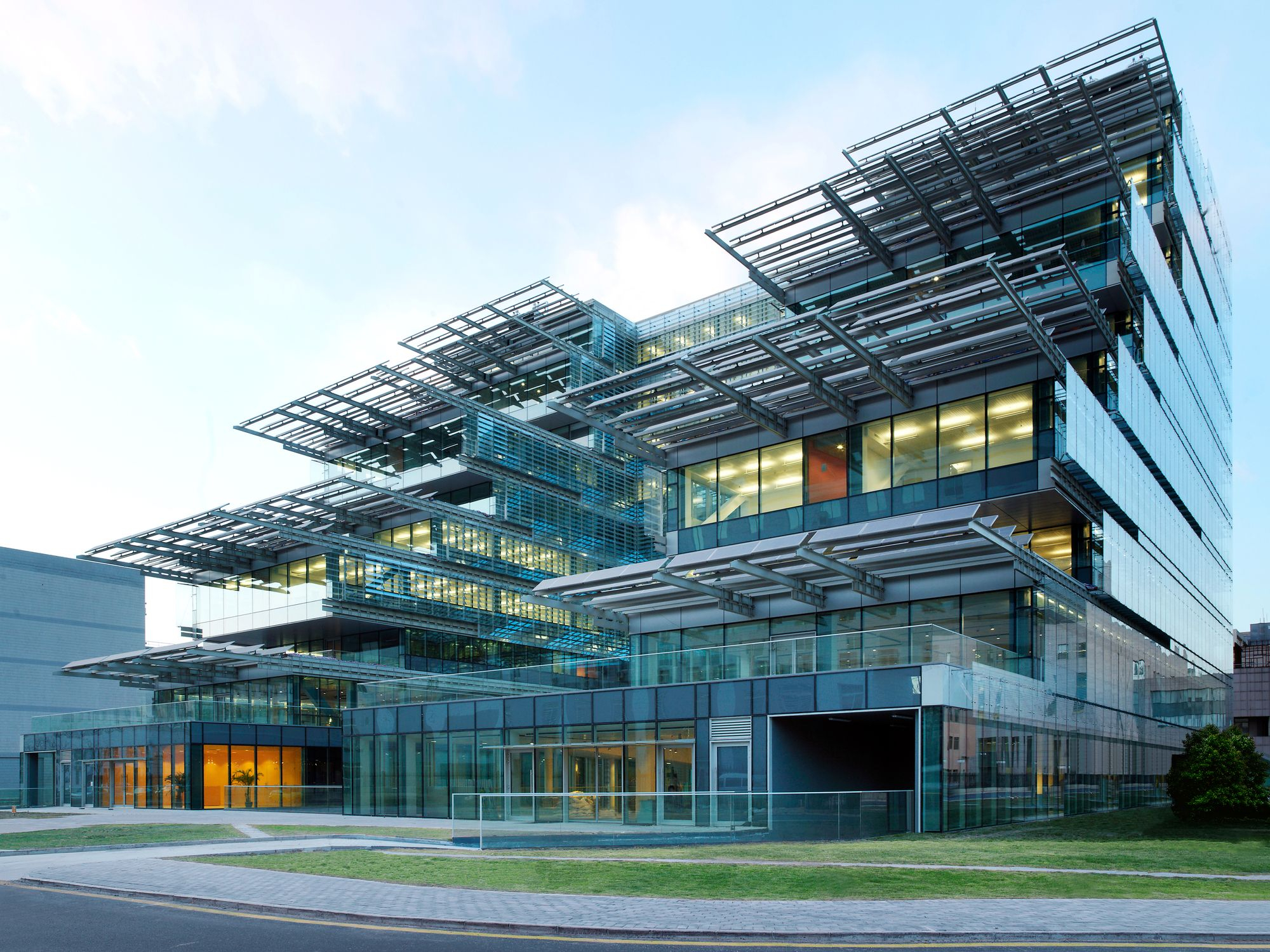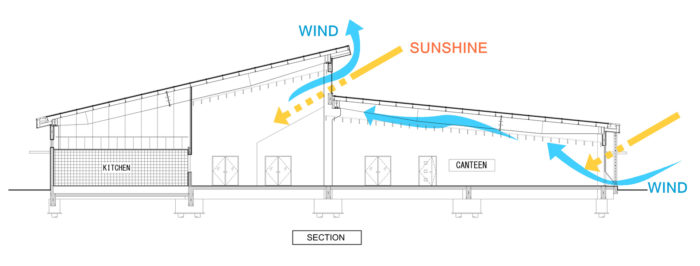Sustainable Construction
It is a method of building that focuses on minimizing the negative environmental impact while maximizing energy efficiency and resource conservation. It involves using eco-friendly materials, adopting energy-efficient practices, and designing buildings that promote a healthy and comfortable living environment. By considering the long-term effects of construction on the environment, sustainable construction aims to create buildings that are both environmentally friendly and economically viable.
How To Make A Sustainable Construction
Construction companies are increasingly acknowledging the significance of sustainable and environmentally friendly building techniques. The growing attention towards sustainability and energy preservation has led to the developing of new technologies, materials, and practices that enhance overall efficiency.
Ergonomic construction goes beyond using renewable materials. It also involves implementing methods that improve sustainable efforts. Some of these methods include:
- Using recycled materials: Recycled materials can be used in a variety of ways in construction, from using recycled concrete to using recycled wood. Using recycled materials helps to reduce the amount of waste that goes to landfills.
- Using sustainable materials: Sustainable materials are materials that are extracted and manufactured in a way that minimizes environmental impact. Sustainable materials can include things like bamboo, recycled wood, and locally sourced stone.
- Using passive solar design: Passive solar design is a design approach that uses the sun’s energy to heat and cool buildings. Passive solar design can be used in a variety of ways, such as orienting buildings to the south, using windows to capture sunlight, and using thermal mass to store heat.
- Building green roofs: Green roofs are roofs that are covered in vegetation. Green roofs help to reduce stormwater runoff, improve air quality, and provide insulation.



- Designing energy-efficient buildings: Energy-efficient buildings use less energy to heat and cool, which can save money on energy costs and reduce greenhouse gas emissions. Energy-efficient buildings can be designed using a variety of techniques, such as using insulation, installing energy-efficient appliances, and using solar panels.



- Designing water-conserving buildings: Water-conserving buildings use less water for things like irrigation, toilets, and showers. Water-conserving buildings can be designed using a variety of techniques, such as using low-flow fixtures, installing rainwater harvesting systems, and using greywater systems.
- Adaptive reuse projects that transform old buildings: It is the process of converting an existing building for a new use.
Importance Of Sustainability In Concrete Construction
Types Of Sustainable Materials For Concrete Construction
There are several types of sustainable materials that can be used in concrete construction. Some of these materials include:
Supplementary Cementitious Materials
Supplementary Cementitious Materials (SCMs) are important for making concrete more sustainable. By replacing some of the cement in concrete, SCMs help to reduce the environmental impact of cement production. Examples of common SCMs include:
Fly Ash: It is a residue generated from burning coal in power plants, is widely recognized for its benefits in enhancing the workability and longevity of concrete. Incorporating fly ash into concrete mixtures not only repurposes waste materials but also helps in reducing the need for cement.
Ground Granulated Blast Furnace Slag (GGBFS): It is a byproduct of the iron and steel industry. It is formed by rapidly cooling molten slag. GGBFS is highly regarded for its ability to improve the strength and durability of concrete, as well as reduce its permeability. This makes it an ideal option for sustainable concrete.
Silica fume: It is a fine powder that enhances the strength and durability of concrete. It is a byproduct of silicon and ferrosilicon alloy production. It also reduces permeability, providing protection against the penetration of harmful substances.
By adding Supplementary Cementitious Materials (SCMs) to the concrete mix, the amount of cement needed is reduced. This not only decreases CO2 emissions but also improves the overall performance of the concrete.
Ultra High-Performance Concrete (UHPC)
It is a highly engineered cementitious composite that offers exceptional mechanical properties, high strength, enhanced fire properties, and durability. The superior performance of UHPC allows for a reduction in the amount of material needed for a given project, decreasing the overall environmental footprint of concrete construction. Additionally, UHPC’s increased durability can extend the service life of concrete structures, reducing the need for maintenance, repair, and replacement. This material also offers potential improvements in energy efficiency and thermal performance of buildings due to its high strength and low permeability.
Recycled Aggregates
Recycled aggregates are made from construction and demolition waste like concrete, bricks, and tiles. Sustainable concrete uses these recycled materials instead of natural aggregates in the mix.
Using recycled aggregates reduces the demand for virgin materials, which helps to conserve natural resources and minimize the environmental impact of their extraction. Repurposing construction and demolition waste as recycled aggregates also helps to divert these materials from landfills, reducing waste and promoting a circular economy. Additionally, recycling and reusing aggregates require less energy than extracting and processing virgin materials, leading to energy savings and a reduction in overall energy consumption associated with concrete production.
Local Materials
Utilizing materials from the surrounding area in a concrete building is a crucial part of sustainable development. This practice aids in lessening the environmental effects, decreasing transportation expenses, and bolstering the local economy. By integrating locally obtainable materials into concrete mixtures, construction projects can become more sustainable without compromising performance and durability requirements. Some instances of local materials suitable for concrete construction include natural aggregates, recycled aggregates, natural pozzolans, locally sourced fibers, and local binders.
Admixtures
Admixtures are materials that are added to the concrete mix in order to enhance its characteristics, like its workability, strength, and durability. There are several eco-friendly admixtures available that can help improve the sustainability of concrete. Some examples of these sustainable admixtures include:
Water-reducing agents are substances that can decrease the water content in concrete without affecting its workability. This means that less cement is required, which ultimately reduces the environmental impact of the concrete mix.
Air-entraining agents are substances that are added to concrete mix in order to create small air bubbles. These bubbles help improve the concrete’s ability to withstand freezing and thawing, making it more durable. As a result, concrete structures that contain air-entraining agents tend to last longer and require less maintenance.
Pozzolanic admixtures, like natural pozzolans or rice husk ash, interact with the calcium hydroxide created during cement hydration. This interaction leads to the formation of extra cementitious compounds, which enhance the strength and durability of the cement and decrease its permeability.
Discovering the Latest Breakthroughs in Technologies and Practices
3D-Printed Concrete
Additive manufacturing techniques are used in 3D-printed concrete to create precise and efficient complex structural components. This process reduces material usage and waste generation. Additionally, it allows for the construction of unique geometries that would be difficult to achieve using traditional methods.
Self-Healing Concrete
Photocatalytic concrete
Photocatalytic concrete contains substances that can decompose pollutants and organic compounds on its surface when sunlight is present. This process enhances air quality and helps create a cleaner environment.
Insulated concrete
Insulated concrete forms offer a combination of reinforced concrete’s structural strength and high-performance insulation materials’ energy efficiency. This results in energy savings and improved thermal comfort in buildings.
Advantages Of Sustainable Construction Practices
- Environmental Impact: Sustainable construction practices help reduce the environmental impact of buildings by minimizing energy consumption, conserving water, and using eco-friendly materials. This leads to a decrease in greenhouse gas emissions and promotes a healthier environment.
- Water Conservation: Sustainable construction incorporates water-saving strategies such as rainwater harvesting, greywater recycling, and efficient plumbing fixtures. These measures help conserve water resources and reduce the strain on local water supplies.
- Improved Indoor Air Quality: Sustainable buildings prioritize indoor air quality by using non-toxic materials and implementing proper ventilation systems. This ensures healthier living and working environments, reducing the risk of respiratory issues and allergies.
- Economic Benefits: While sustainable construction may require higher upfront costs, it often provides long-term economic benefits. Energy-efficient buildings have lower operational costs, reduced maintenance requirements, and increased property values. Additionally, sustainable construction practices create jobs in green industries.
- Social Benefits: Sustainable construction promotes a better quality of life for occupants. It prioritizes comfort, natural lighting, and noise reduction, creating pleasant living and working spaces. Furthermore, sustainable buildings contribute to community development and social equity by considering factors like accessibility and affordability.
























